Souks of Marrakesh
Lessons learned the hard way on a trip to North Africa.
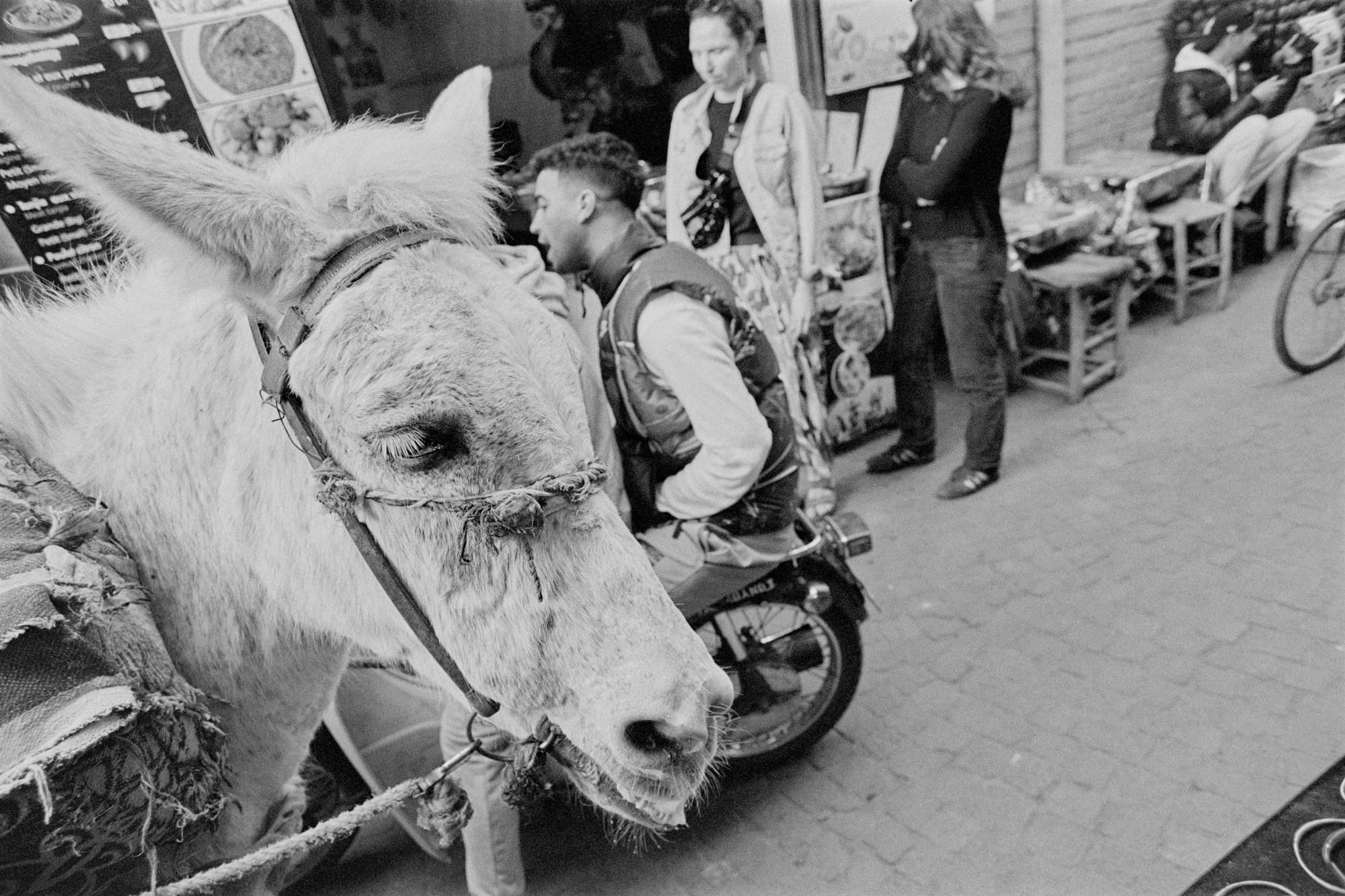
This spring I had the privilege of my first trip to North Africa, a few days in Marrakesh. I’ve always been enamored with the idea of getting lost in a souk (and shopping my way back out), camera in hand to document he lives around me.
Now, you may have heard, and I certainly had, that Marrakesh can be notoriously difficult for street photography. Honestly I had trouble finding anything on the interwebs explaining that difficulty in any detail, so I was apprehensive about what lay waiting for me as an obvious tourist in the Medina. I was soon to learn some history lessons the hard way.

But first some pleasant surprises.
Marrakesh is not a place to visit if the idea of fierce negotiation fills you with dread. As it happens, though I may not be especially good at it, I love the thrill of price discovery. And my daughter with her flawless Parisian French clearly fell in love with driving for the best possible deal on things she wanted. The thing is, basically everything is negotiable in Marrakesh, and to American ears this means that so much sounds and feels like a scam. It’s not, it’s just a different approach to economic interaction than many of us are used to.
I’ve got pretty good spatial reasoning abilities, and it is very difficult for me to get lost. Which is a shame because I love the feeling of being lost. GPS doesn’t work too well in the depths of the souk. I’m unsure why. It’s extremely dense. There’s a lot of corrugated steel roofing which is undoubtedly blocking satellite signals. I was looking forward to the possibilities for actually getting lost. Alas, not to brag, but it was not to be—it only took a day of studious wandering to build a mental map of most of the souk. But for a moment I dared to hope…
Moroccan food, especially breakfast, is so good. I’ve had my share of couscous dishes in Paris, but I was unprepared for the range of flavors available in Moroccan cuisine. I’ve since made my own ras el hanout spice mix at home that I use on everything. I crave Moroccan semolina cakes with honey and mint tea constantly.



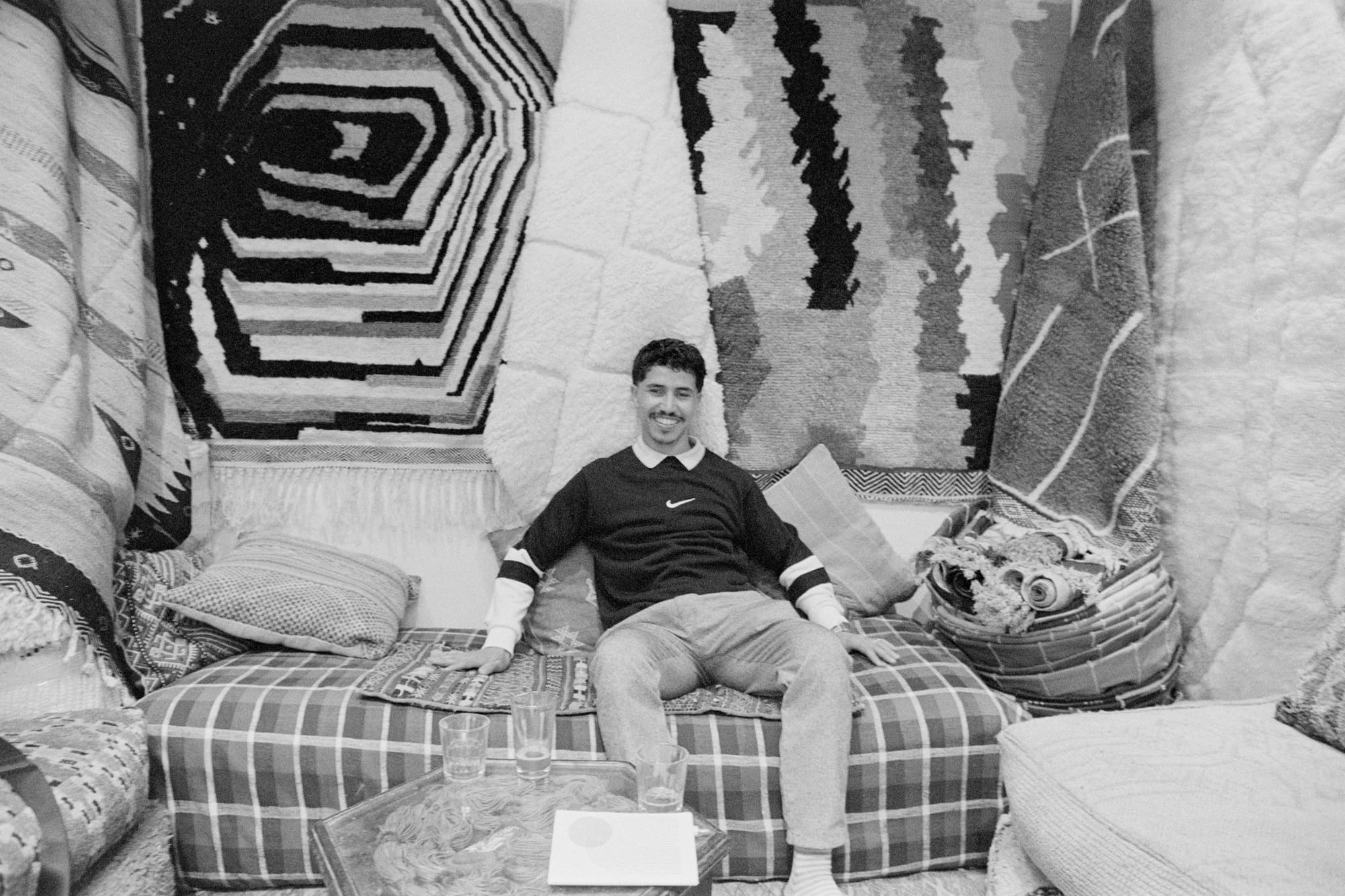
But let’s talk about photography. And ugly history. Moroccans are notoriously shy, and for good reason. From the 1960s through the 1980s, an era known as les années du plomb (“the years of lead”), Morocco was governed by a totalitarian regime that severely oppressed the population. You can well imagine that under such circumstances, people would be more than a little suspicious of having their photograph taken. In fact, they would actively seek to avoid it.
This suspicion remains today. The years of lead remain in living memory. Moroccans are thus by nature a very private people, they are not fans of public recording of their activities. A lesson I would learn the hard way.
I didn’t understand this until after I returned home of course. I just knew people would be shy, or they might demand money for a photograph of them. So I brought an ultra wide lens and I shot from the hip. If I brought the viewfinder to my eye, I was careful to ask first. And in my experience, those I asked were more than happy to be photographed—maybe they knew a positive image was good for business? But for the most part I was able to snap away unmolested by keeping my camera at waist level, and relying on my Pentax ME Super’s aperture priority automatic metering.


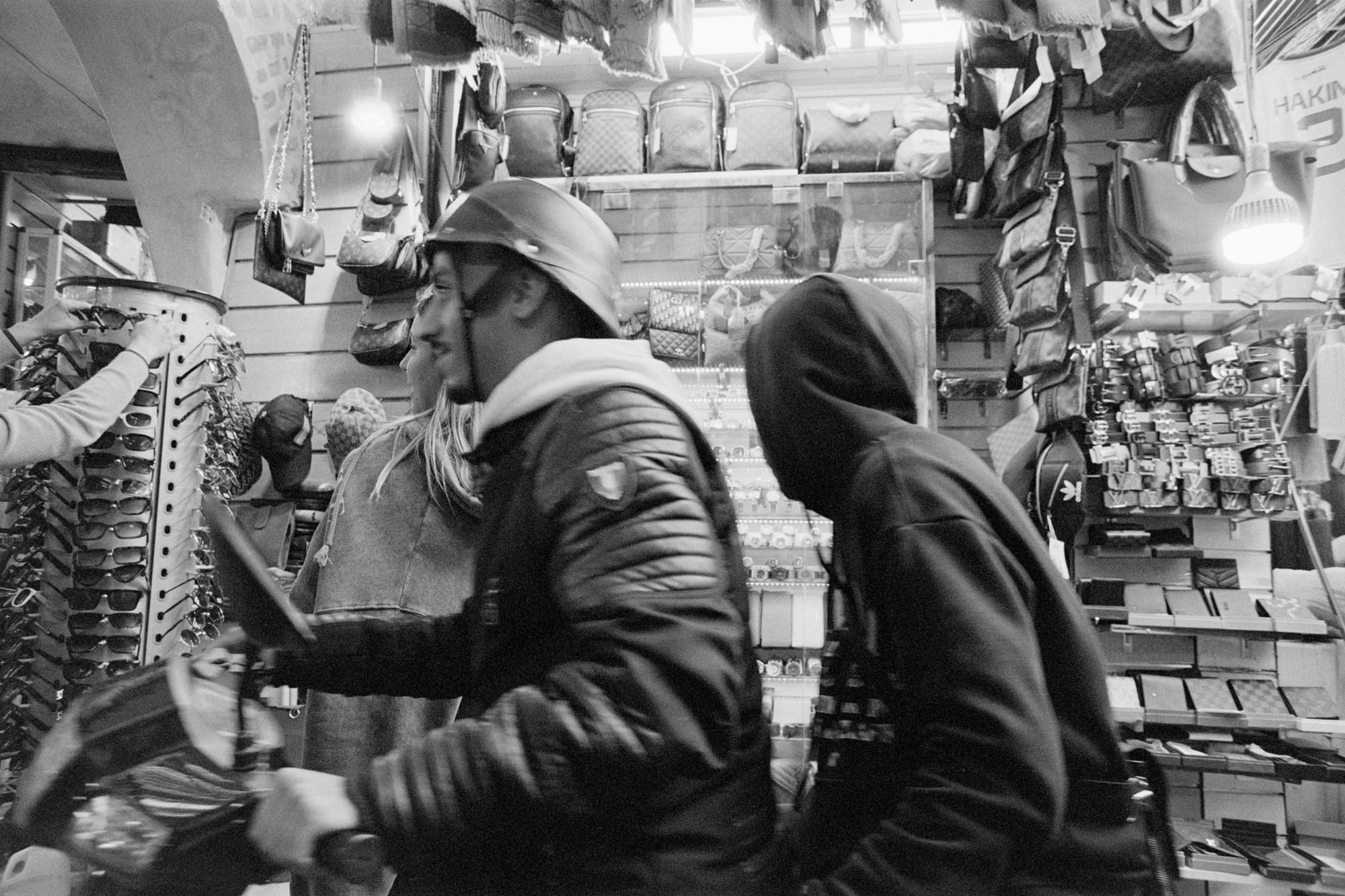

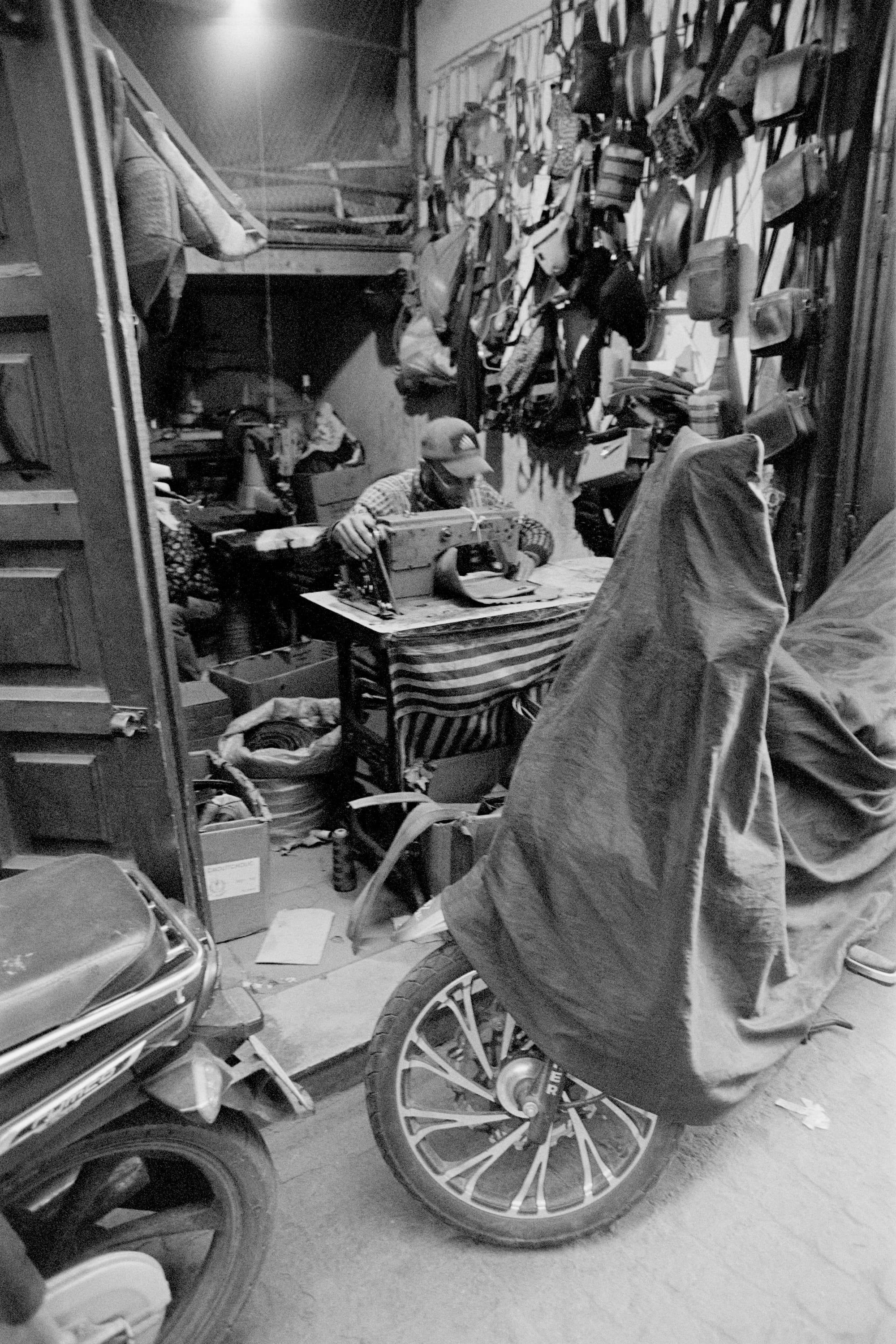


Until I crossed that line I mentioned.
By the end of the first day, I was feeling cocky. I felt like I had my technique down, I was just cruising through my roll of film without raising suspicions. I saw this tableau of people to my side, and looking straight ahead, I pointed my camera to the side and captured the scene.
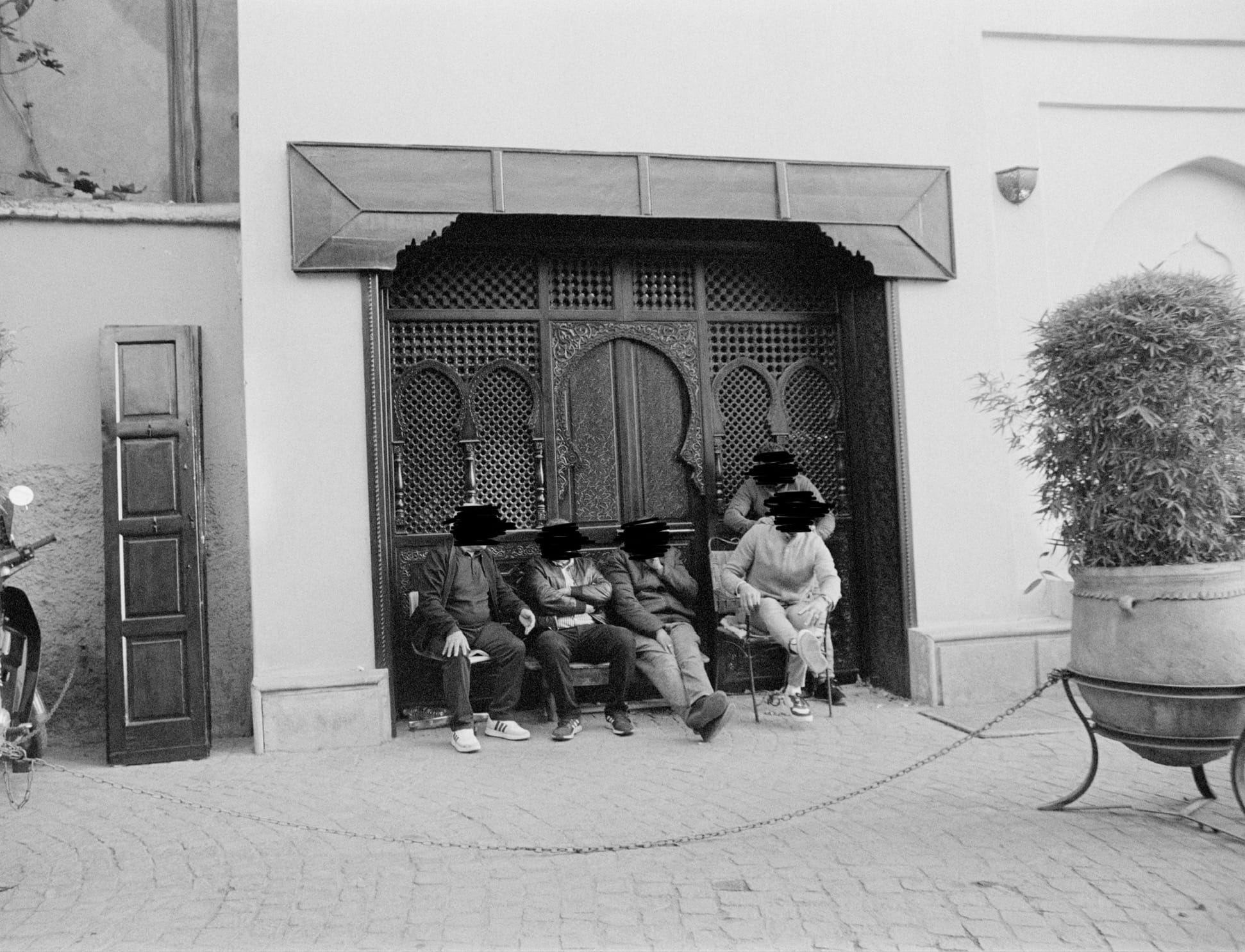
Unhappy people.
They noticed. And at least one of them was pissed.
You can guess which one, from the photo above (the fellow on the far right). He immediately confronted me, threatened me, said he would call in the police, told me to delete the photo (which I would have done had I not been shooting on film). I froze out of surprise and fear. How would I navigate this? I fell back on a routine that served me well in the past: I’m just a dumb American tourist, sorry. Nope that didn’t work. After what felt like tens of minutes of confrontation, adrenaline, and fear (but was probably more like tens of seconds at most), I just stepped around him, and continued on my way. He didn’t pursue.
That interaction left me shaken. It could have been a lot worse. So much worse. I decided to be less cavalier, to be more explicit about consent, or at least to be more obvious with what I was doing.
You see, street photography is an opportunity not just for taking cool photos of strangers, but for actually meeting people, learning a little about them, and offering something in exchange if only a moment of conversation and respect. After this confrontation, I became a lot more thoughtful about how I captured the scenes of Marrakesh, and a lot more deliberate in seeking consent. Not that I was perfect of course, but definitely a lot more aware.
Would I return to Marrakesh? Hell yes, I can’t wait to go back. But this time, I’ll bring a new attitude towards my art. An attitude of a greater spirit of collaboration and consent.
Photos taken with Pentax ME Super and SMC Pentax 55 f/1.7 on Ilford HP5 plus pushed to 1600 and developed in Adox XT-3.
Support this blog
If you enjoy reading this blog, I encourage you to consider purchasing a book or print to show your support. And if you're into analog photography, check out my new mobile app Crown + Flint.

